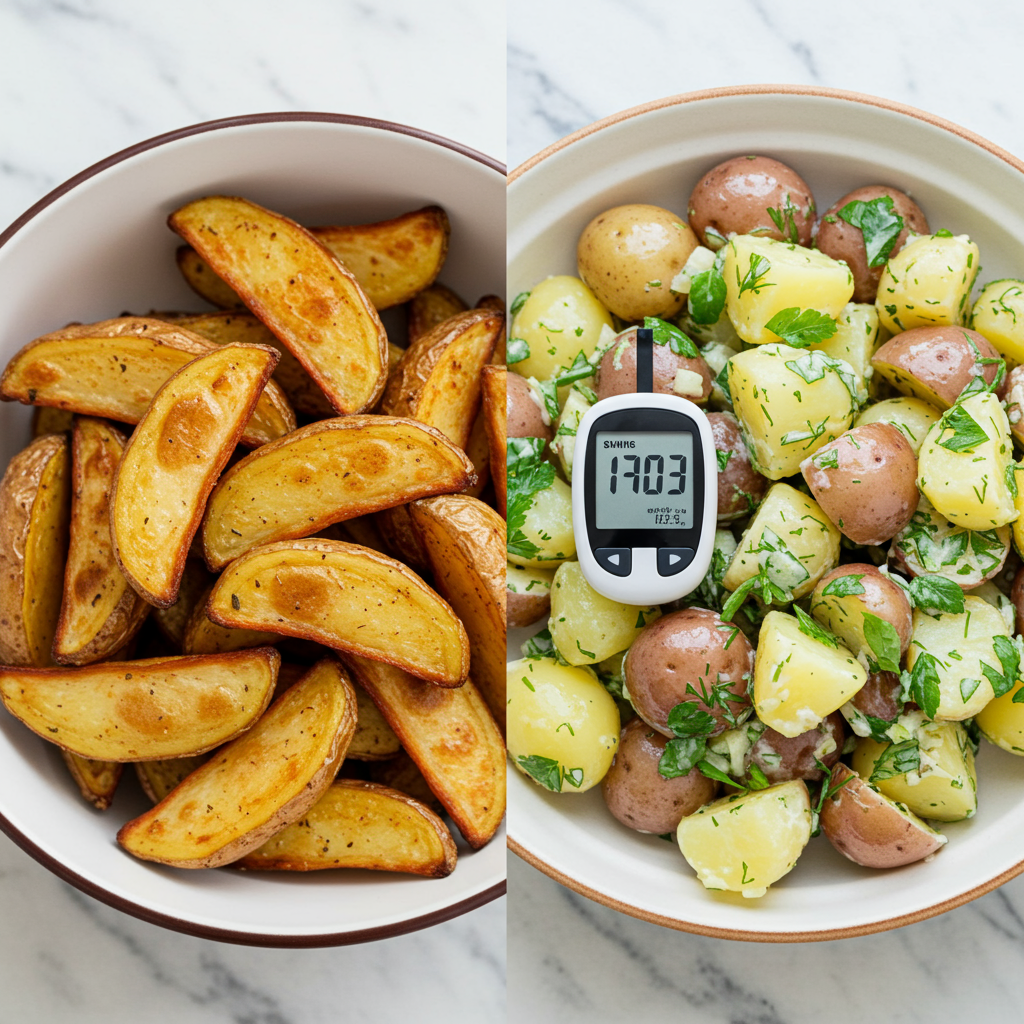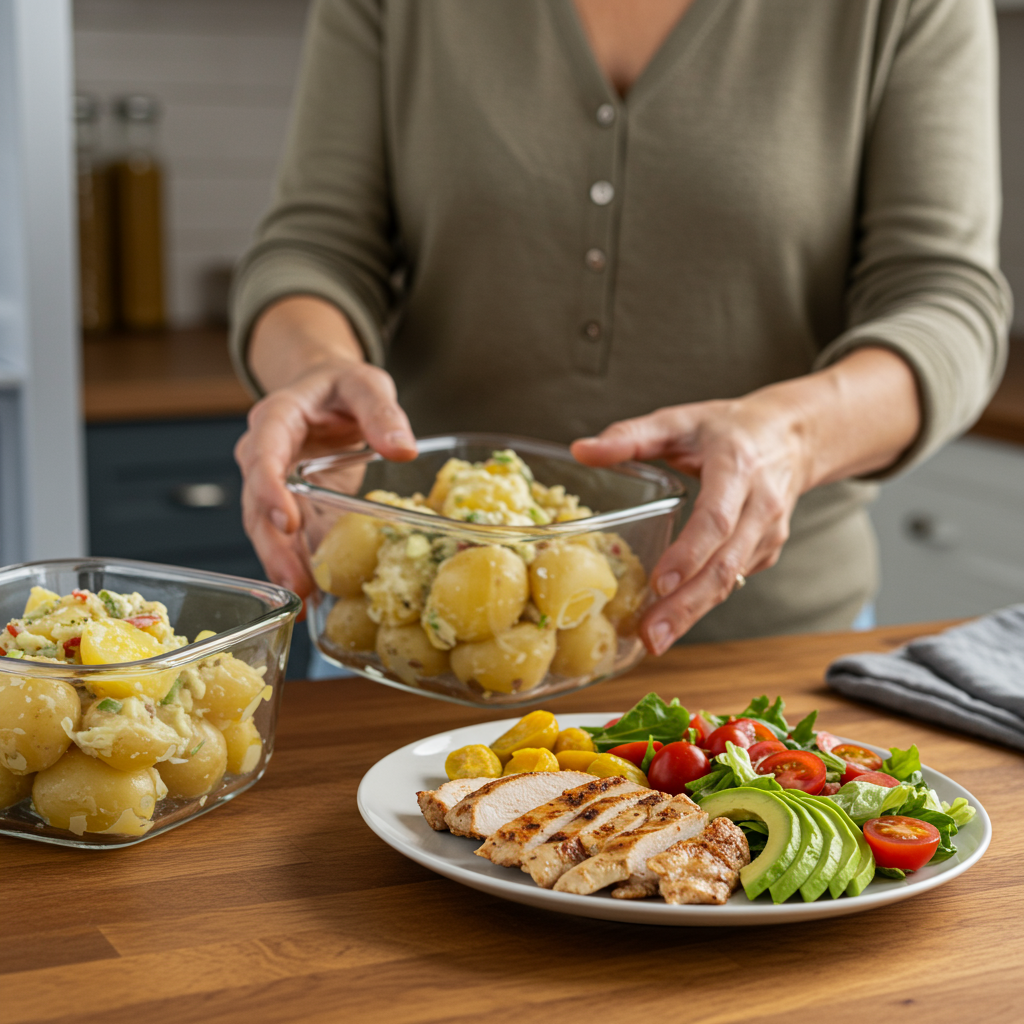The Surprising Impact of Cooking Methods on Blood Sugar: Why How You Cook Your Potatoes Matters
Are you one of the millions struggling with blood sugar management? If so, you might be surprised to learn that how you prepare your food can be just as important as what you eat. Today, I'm going to reveal something fascinating about a common food that might change how you cook dinner tonight: potatoes.

The Potato Paradox: Friend or Foe for Blood Sugar?

Potatoes have gotten a bad reputation in the diabetes community, and for understandable reasons. They're high in carbohydrates and can spike blood sugar quickly. But what if I told you that the same potato could affect your blood sugar differently depending on how you cook it?
This isn't about portion control or topping choices (though those matter too). This is about the fundamental chemistry that happens when you apply different cooking methods to the humble spud.
The Science Behind Cooking Methods and Glycemic Response
When we cook starchy foods like potatoes, their internal structure changes in ways that affect how quickly our bodies convert them to glucose.
Boiling: When potatoes are boiled, water penetrates the starch granules, causing them to swell. This process, called gelatinization, breaks down some of the starch. However, as boiled potatoes cool, something magical happens. Some of the starch reconfigures into what scientists call "resistant starch" – a type of starch that resists digestion in the small intestine.
Why does this matter? Because resistant starch:
- Isn't fully broken down into glucose
- Feeds beneficial gut bacteria
- Leads to a lower, slower blood sugar response
- May improve insulin sensitivity over time
Roasting: When potatoes are roasted at high temperatures, especially with oil, they undergo different chemical changes. The dry heat creates a crispy exterior through caramelization and Maillard reactions, which can actually make the starches more rapidly digestible. This means faster conversion to glucose and potentially higher blood sugar spikes.
In fact, research has shown that boiled and cooled potatoes can have a glycemic index up to 25-30% lower than the same potatoes when roasted! That's the difference between a moderate and high glycemic food.
Practical Tips for Potato Preparation
So how can you use this knowledge to make better choices for your blood sugar health?
- Try the "cook and cool" method: Boil potatoes, then refrigerate them for at least several hours before eating. Enjoy them cold in potato salad or reheat them (reheating doesn't significantly reduce the resistant starch that formed during cooling).

-
Add acid to your potato dishes: Toss your boiled potatoes with vinegar or lemon juice in a salad. The acidic environment further helps to lower the glycemic impact.
-
Practice portion awareness: Even with optimal cooking methods, potatoes are still carbohydrate-rich. A reasonable portion is about the size of your fist.
-
Pair wisely: Always eat potatoes with protein, healthy fats, and fiber to further blunt the blood sugar response. Think beans, olive oil, and lots of non-starchy vegetables.
-
Choose waxy varieties: New potatoes, red potatoes, and fingerlings tend to have slightly less impact on blood sugar than russets or Idaho potatoes.
The difference between a blood sugar spike and a gentle rise could be as simple as choosing to boil your potatoes for tonight's dinner instead of roasting them. These small changes, consistently applied, can lead to meaningful improvements in your metabolic health.
Remember, functional medicine reminds us that food is information, not just calories. By understanding how cooking transforms our food, we gain powerful tools to take control of our health without sacrificing the foods we love.
References
-
Fernandes G, Velangi A, Wolever TMS. (2005). Glycemic index of potatoes commonly consumed in North America. Journal of the American Dietetic Association, 105(4), 557-562.
-
Tian J, Chen J, Lv F, Chen S, Chen J, Liu D, Ye X. (2016). Domestic cooking methods affect the phytochemical composition and antioxidant activity of purple-fleshed potatoes. Food Chemistry, 197(Pt B), 1264-1270.






